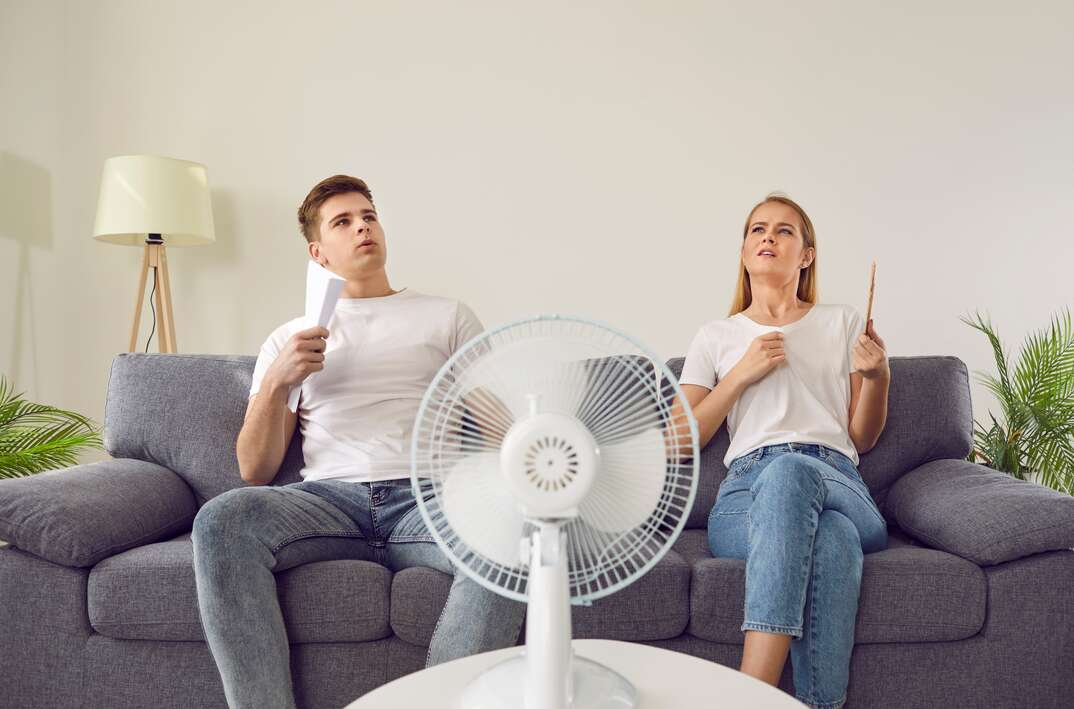- AppliancesElectriciansHVACLandscapingLocksmithPest ControlPlumbingRenovationRoofingT V RepairAll Home Improvement
- Car AccidentClass ActionCorporate LawCriminal DefenseDivorce LawEmployment LawFamily LawFinancial LawLegal AidMedical Injury LawyersMedical MalpracticeReal Estate LawWater Fire RestorationAll Legal
- InvestmentRetirementAll Finance
- Animal InsuranceAutoGeneral InsuranceHealth PolicyHome RentersAll Insurance
- DentalHealth SpecialistsAll Medical
- Animal CareVeterinaryAll Pets
- Auto GlassTowingAll Automotive
Why Are There Hotspots in My Home?

It's summer, and the AC is working overtime. But while your family says it's too hot, you feel it's too cold in the house. Before blaming this on fickle, personal preferences, maybe you need to check for hot spots in the house.
Read More Heating and Cooling Articles
Before calling in the professionals, it's a good idea to do your own research to identify warm spots in the house. You'll need a temperature gauge, preferably one that responds quickly. Leave your AC on for at least 24 hours to let the temperature settle within the home. Measure and record the temperature in each room, preferably in more than one place. Pay particular attention to rooms that face the sun and those furthest from the air handler. If necessary, repeat these measurements at various times of day.
By comparing these readings, you can find the warm spots in the home and areas of your home that may be too cold. Both require attention.
Why Are There Rooms or Parts of Rooms That Are Much Hotter Than Others?
After taking these measurements, you'll know the rooms or areas where you have a problem with hot spots. If it's an individual room, you can focus your attention there. Alternatively, there may be a more general issue. Here are some common reasons for hot areas in the house.
Poor Insulation and Air Leaks
You may be losing cool air through gaps in windows and doors. Carefully check to see that they seal properly and the weather stripping is in good condition. Replace torn or poorly fitting seals. Check for gaps in the insulation and siding. You can plug holes using insulation foam but may need professional help to replace siding or insulation.
Faulty Air Vents
Check that the air vents are clean and clear of debris. Most types are adjustable, so you can control the amount of air coming into the room. Some are secured by screws, and others by clips to allow removal for inspection and cleaning.
Blocked or Leaking Ducts
Put your hand over air vents and into ducts to check that there's a good flow of air. If the airflow is poor or the air coming out of the air vent is warm, the ducting could have a blockage or may be leaking. If the airflow out of the ducts is uneven, consider having a professional duct inspection done.
Poor Air Balancing
If you have a larger home, the ducting will be split up into different sections, with the airflow to individual sections controlled by dampers. A symptom of poor air balancing is that part of the home is warmer than the rest. You may need to call in a professional to balance airflow to the different sections of the house correctly.
Incorrectly Sized Ducts
This is a common problem with home extensions and alterations, where the ducting is the wrong size and too small to cool the extension. You can often rectify this by fitting larger ducting, although a cost-effective solution might be installing mini split units in the affected rooms.
Air Handler Faults
The air handler has a blower that distributes the cool air to the home and a filter that removes dirt and dust. A blower fault or blocked air filter can cause poor airflow and uneven cooling. Periodically clean and replace the filter. Also, check that the blower fan is securely fixed and the fan blades aren't broken.
More Related Articles:
- Hiring an HVAC Tech? Here are 5 Top Tips
- What's in My HVAC Technician's Van?
- HVAC Out? 5 Common Causes and Quick Fixes for Each
- How Much Does an HVAC Filter Cost?
- HVAC Upkeep Costs: Everything You Need to Know
Your home HVAC system is a complex system with many different components and parts. The best way to resolve uneven cooling and heating difficulties is to call an HVAC professional. They have the skills to diagnose the reasons for hot spots in the house and recommend corrective actions. Issues that HVAC specialists can rectify include:
- Ductwork repair and upgrades
- Installation of zoning system
- Upgrading and replacing the air conditioner unit
- Repairing or replacing the air handler
Resolving hot and cold spots in the home makes for increased comfort and more efficient air conditioning.
Elocal Editorial Content is for educational and entertainment purposes only. Editorial Content should not be used as a substitute for advice from a licensed professional in your state reviewing your issue. Systems, equipment, issues and circumstances vary. Follow the manufacturer's safety precautions. The opinions, beliefs and viewpoints expressed by the eLocal Editorial Team and other third-party content providers do not necessarily reflect the opinions, beliefs and viewpoints of eLocal or its affiliate companies. Use of the Blog is subject to the
Website Terms and Conditions.The eLocal Editorial Team operates independently of eLocal USA's marketing and sales decisions.



